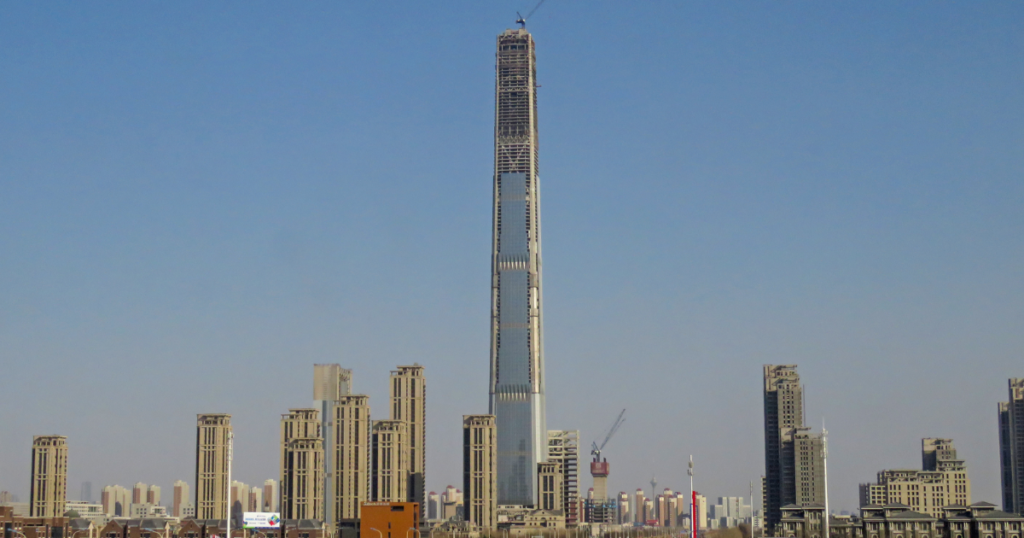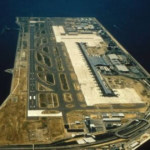Introduction
Skyscrapers symbolize human ambition, innovation, and progress, but not all of them reach completion. Around the world, many towering structures have been left unfinished due to financial troubles, political changes, engineering failures, or unforeseen crises. This article explores the stories behind the tallest skyscrapers that were never completed, shedding light on why they were abandoned and what remains of them today.
The Ryugyong Hotel (North Korea)
One of the most infamous unfinished skyscrapers is the Ryugyong Hotel in Pyongyang, North Korea. Planned to be the tallest hotel in the world, construction began in 1987 with an intended height of 330 meters (1,080 feet) and 105 floors.
Why It Was Never Completed:
- The collapse of the Soviet Union in 1991 led to an economic crisis in North Korea, halting funding for the project.
- Construction remained stalled for over 16 years before an Egyptian company applied a glass facade in the 2000s.
- Although the exterior is complete, the interior remains largely unfinished, and the building is still non-operational today.
The Nakheel Tower (Dubai, UAE)
Dubai is known for its architectural marvels, including the Burj Khalifa, the world’s tallest building. However, one ambitious project, the Nakheel Tower, was set to surpass even that, reaching an astounding 1,000 meters (3,281 feet).
Why It Was Never Completed:
- The 2008 global financial crisis led to economic difficulties for the developers, causing the project to be put on hold.
- Despite initial efforts to revive the project, Nakheel ultimately abandoned it in favor of other developments.
- The land where the tower was to be built was later repurposed for a different project.
The X-Seed 4000 (Japan)
The X-Seed 4000 was never actually under construction but was a proposed structure meant to be the tallest building in the world at 4,000 meters (13,123 feet). Designed as a self-sustaining city, it would have housed hundreds of thousands of residents.
Why It Was Never Built:
- The cost was estimated at over $1 trillion, making it financially unfeasible.
- Engineering limitations and environmental concerns also made the project impractical.
- Despite its failure, the concept inspired future designs for mega-tall buildings and sustainable cities.

The Chicago Spire (USA)
Designed by Spanish architect Santiago Calatrava, the Chicago Spire was envisioned as a 150-story residential skyscraper standing at 610 meters (2,000 feet). The spiraling design would have made it one of the most unique buildings in the world.
Why It Was Never Completed:
- Financial difficulties and the 2008 recession caused work to stop after only the foundation was completed.
- Legal battles and disputes over funding ultimately led to the project’s cancellation in 2014.
- The site remains an empty lot today, though occasional discussions about reviving the project have surfaced.
The India Tower (Mumbai, India)
The India Tower was planned as a 126-story skyscraper, reaching 707 meters (2,320 feet). The goal was to create India’s tallest building and a new financial hub in Mumbai.
Why It Was Never Completed:
- Legal and regulatory issues delayed construction.
- The developers faced financial setbacks, leading to the permanent shelving of the project.
- The site was eventually redeveloped for a smaller-scale project.
The Sky City (China)
Sky City, planned for Changsha, China, was designed to be the world’s tallest building at 838 meters (2,749 feet), surpassing the Burj Khalifa. It was intended to be constructed in just 90 days using prefabricated modules.
Why It Was Never Completed:
- Construction was halted shortly after groundbreaking in 2013 due to permit issues and environmental concerns.
- Government authorities raised concerns over safety standards and the feasibility of completing such a massive structure in record time.
- Despite several attempts to restart the project, the land remains undeveloped.
The Torre de David (Venezuela)
The Torre de David, located in Caracas, Venezuela, was initially planned as a 45-story financial skyscraper. However, due to the country’s economic collapse, construction was halted, and the unfinished building became an informal settlement for thousands of squatters.
Why It Was Never Completed:
- Financial crises in Venezuela led to a lack of funding to finish the building.
- The structure became occupied by homeless families, leading to it being nicknamed “The Vertical Slum.”
- In 2014, squatters were relocated, but the building remains unfinished to this day.
Conclusion
These unfinished skyscrapers stand as reminders that even the most ambitious projects can face obstacles. Whether due to financial crises, political shifts, engineering challenges, or unforeseen global events, these towering dreams remain incomplete. However, their legacies continue to influence architectural innovation, inspiring future generations to push the limits of construction and design. Perhaps one day, some of these structures will be revived, while others will remain as ghostly reminders of grand ambitions left unfulfilled.


